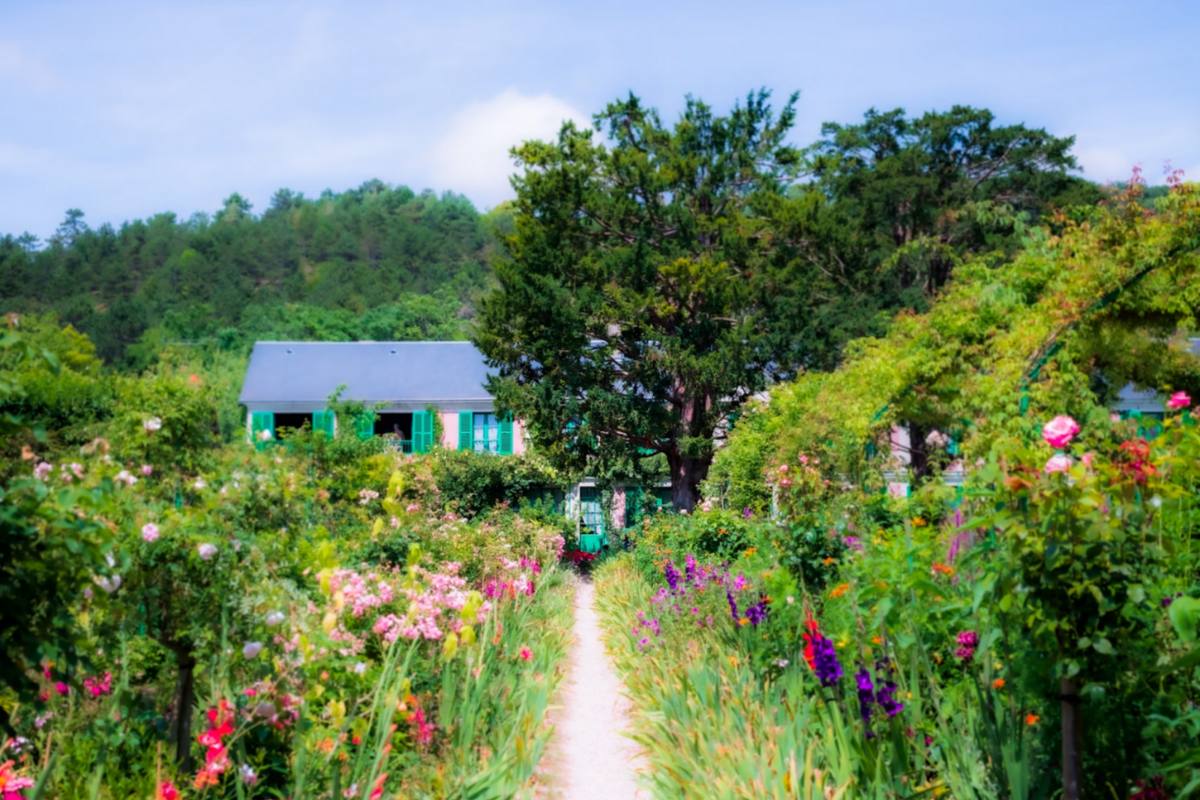If you want to spruce up your garden and define your planting beds, installing some decorative edging can make a big impact. Creative garden bed edging gives your landscaping a crisp, polished look and serves practical purposes, too. Read on to learn all about the different edging options, considerations when choosing edging, how to install it properly, and some inspiring pictures of gardens utilizing decorative borders.
Types of Garden Edging
You can choose from several edging materials when accenting your garden beds. Each has its own unique look, price point, and installation requirements.
Plastic
Plastic lawn edging is an affordable and low-maintenance option. It comes in sections that connect flexible coils or solid panels that can be cut to custom sizes. Plastic borders come in neutral colors like black and brown or vibrant hues like red, green, and blue to complement your garden’s color scheme. This lightweight material won’t rot, corrode, or warp but can become brittle and crack over time when exposed to harsh weather.
Steel
For a contemporary look, metal garden borders have clean lines and visual appeal. Aluminum and galvanized steel strips stand up well to moisture and hold their shape. Stainless steel is the strongest option but also the most expensive. Metal edging installs quickly since you push it into the ground. Like plastic, it won’t decay but can also work loose over time.
Wood
Landscape timbers and natural wood look as charming as garden edging. Options like cedar and redwood resist insect damage and rot fairly well. Wood that has been pressure treated also holds up better outside. Keep in mind that wood borders will need occasional maintenance, like sealing or staining. But the visual warmth and rustic aesthetic can be worth the extra effort for some gardeners.
Stone/Brick
For permanent borders that feel seamlessly integrated, stone and brick make excellent choices. Both porous materials blend into natural surroundings beautifully. Loose stones or pavers are laid snugly together and buried, sometimes additionally secured with landscape adhesive. Mortared brick, concrete blocks, poured concrete ribbons, and stone walls create extra sturdy edging that should last indefinitely. However, they also require the most intensive installation.
Plants
In addition to the above inert materials, plants can also effectively edge gardens. Herbs like thyme and oregano, flowering perennials like alyssum and lavender, or compact bushes are pretty and practical options. Plant them tightly and prune them periodically to keep them contained. This “living border” infuses color and visual interest while serving as an edging. The plants also help hold soil in place. It’s an organic solution that evolves with the seasons.
Choosing Your Garden Border
Now that you know the main categories of edging, consider which route you want to take. Here are key factors to help select the best material for your unique space:
Budget
The prices of edging range widely, from a few dollars for plastic rolls to hundreds or even thousands for intricate stonework. Set realistic expectations based on what you can afford.
Skill Level
Some edging, such as steel and plastic strips, requires minimal installation effort. Mortared materials, on the other hand, require advanced masonry skills and labor to construct. Be honest about your DIY capabilities.
Yard Features
Choose edging that fits the overall style of your garden. For contemporary designs, steel or colored plastic pops nicely. In cottage gardens, stone, wood, or plants enhance the natural charm. Match any hardscaping, too.
Climate Conditions
When selecting durable edging, consider your region’s weather and soil type. Permeable materials withstand freeze-and-thaw cycles better than solid plastic or concrete. Also, assess sun exposure, moisture levels, and other factors that could affect aging.
Personal Preference
Think about your decor tastes and what aesthetic you find most pleasing. Do you prefer curves or straight lines? Neutral tones or vivid hues that stand out? Garden borders are meaningful choices that guide the overall look and functionality.
Installing Edging
Once you have the supplies, check out these tips for properly installing garden edging to keep your landscape looking sharp:
Outline Layout
First, map out the garden bed shape and edging path with a hose or spray paint. Factor in any existing plants or hardscape that will remain so your new border edges around them cleanly. Having a set layout as your guide is key.
Prepare the Site
Remove grass or vegetation along the outline using a flat shovel or gas-powered sod cutter. Dig a trench roughly 4 inches wide by 8 inches deep the entire border length. Slope the soil inward slightly from the lawn side. Smooth and pack the soil to create a stable edging base before placing your chosen material.
Follow Instructions
For products like segmented plastic borders or metal landscape strips, consult the manufacturer’s instructions for correct installation guidance. Interlock pieces, connect spikes where applicable, and ensure proper anchoring for longevity.
Backfill Carefully
After positioning your edging, backfill the trench with soil up to ground level or the product’s lip. Water well to settle the dirt. Avoid covering any decorative portion you want visible or the anchoring spikes. Check that the edging remains upright and straight as you work. Add soil underneath to shim and level any sunken sections.
Finishing Touches
Cover the outward grass side with leftover sod pieces or fresh seed mix to meld the new edge with your existing lawn seamlessly. For pavers or heavy stone edging, use polymeric sand between cracks. Sweep off the excess. Add decorative rock, bark, or mulch along the inner bed perimeter to accentuate the defined new border.
Garden Edging Inspiration
Once correctly in place, decorative borders lend so much to garden beds beyond basic utility. Here is some visual inspiration showcasing just how much edging can elevate overall garden design when thoughtfully incorporated:
- Backyard garden utilizing brick and stone edging along curved planting beds with river rock accents. The varied textures and natural hues blend beautifully.
- The rustic brick path divides waves of colorful blooms. Stone edges repeating beds nearby in this cottage garden.
- This contemporary front yard features succulents and ornamental grasses. The bright red plastic border pops against the lime-colored gravel and home siding, mirroring the modern window frames.
- Galvanized steel creates an industrial-style edging to frame native shrubs and decorative sage. Pavers lead to the modern porch.
- The lush garden bed filled with purple and yellow irises. The pressure-treated landscape timbers match the raised (garden bed edging) behind while keeping mulch neatly contained.
Whether you choose plastic, metal, stone, or wood, installing quality borders allows you to redefine the beds in your garden. Properly preparing the space makes all the difference for edging longevity—accent with rocks, filler plants, or soft LEDs to complement your new garden edge. Then, stand back and admire how your vision has transformed into a beautiful, blossoming reality.







Leave a Reply